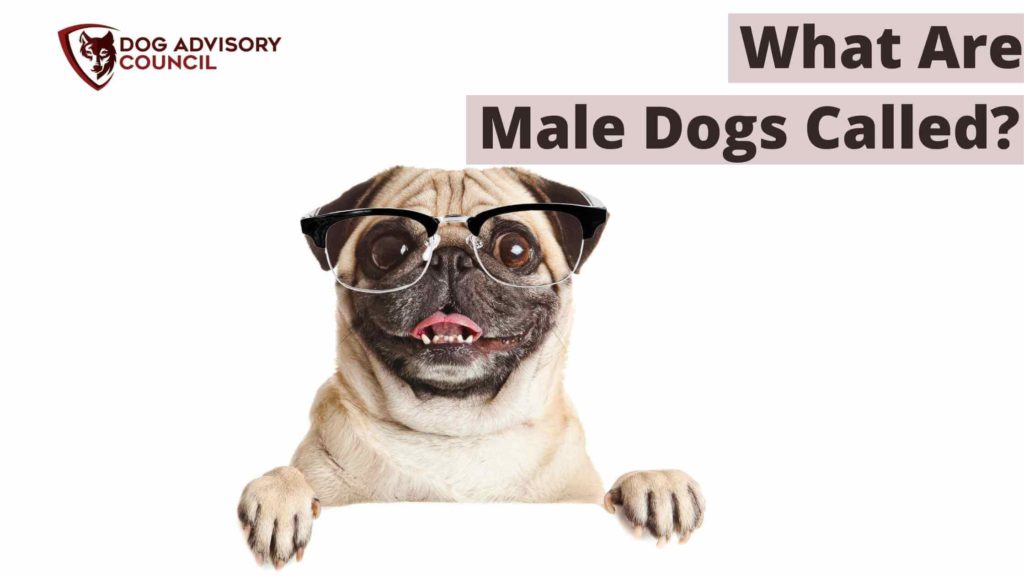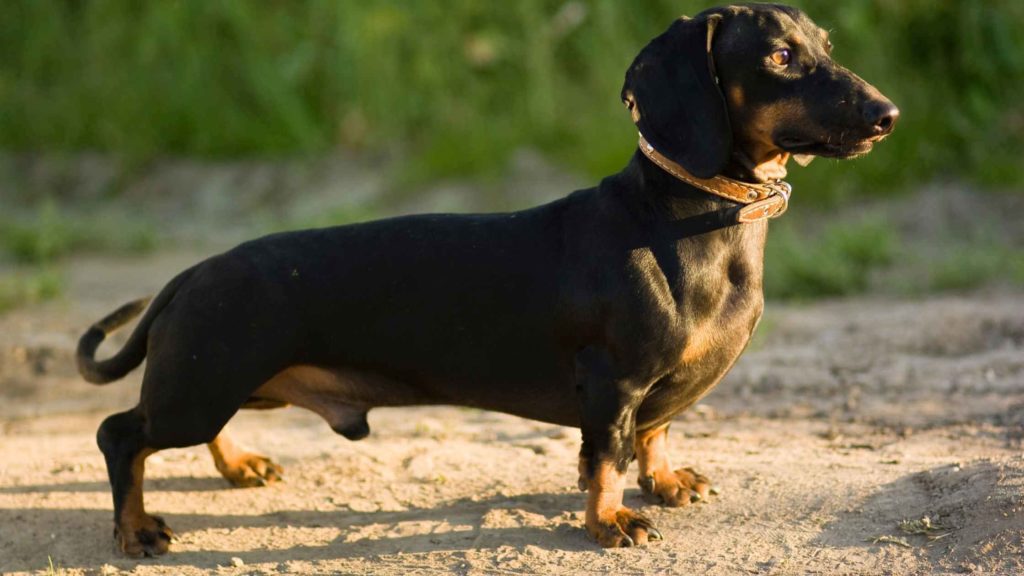
In the world of dog breeding, there are specific terms that you must understand on their own and their potential relationship to other terms. Here’s what are male dogs called and what you should know about male dogs!
The formal and technical term to call a male dog is a dog, but it depends on the context you refer to him: from his role in breeding or his relationship to his puppies.
As a breeding dog, he’s called a stud. This implies that he is intended to breed but hasn’t fathered a litter yet. When referring to a male dog in relationship to puppies he has fathered, the correct and more accurate term is a sire.
While the two are often thrown around interchangeably, they imply different things in the professional world of dog breeding. There are also less common terms that you should understand when looking to enter a conversation using the correct terminology.
What do you call a male dog?
Within the industry, several terms are used when referring to dogs at different ages, stages, and in different roles. Interpreting a conversation correctly means that you’ll need to understand what’s being discussed! These terms include:
- A puppy
- A dog
- A stud
- A sire
- A gelding/A jerry
Some of these will be more familiar than others, and others will be more acceptable in everyday conversation. You’ll also want to make sure that you use the correct term in a formal setting, as it can steer a conversation in the wrong direction!
A puppy
You know this one, right? Of course, you did! This is the formal term used to describe a male dog under the age of 6 months. He is growing and developing into something more “useful” (breeding-wise).
A dog
Yes, seriously. This is a formal term in breeding that refers to an intact male that is now considered old enough to mate successfully. He would be awaiting his testing and health profile results to become anything more formal. This is the stage where he’d be considered for breeding or adopted out as a classic family dog.
A stud
As mentioned briefly in the introduction, this term is used for a “dog” who has successfully passed the tests to be used as a “sire.” These include medical tests that help the breeder create future litters of healthy puppies for sale.
A sire
Also mentioned already, this is the term for a “stud” who has successfully created a litter of puppies! From this point on, he can be referred to as a “sire,” though it often only concerns the litters of puppies he’s responsible for. Elsewhere, he’d still be considered a “stud.”
A gelding or A jerry
Meaning the same thing, with the first one being more acceptable, this is the name for a “dog” who has become passed-on as a general dog rather than a breeding one. They are then neutered, and this neutering status earns them the term “gelding” or “jerry.”
What is a young male dog called?
As you read about above, the technical term for a male dog changes depending on his age and use. For a male dog under 6 months of age, “puppy” is correct. You can use “dog” or “gelding” as they get older, depending on their neuter situation as they age.
What is a mature male dog called?
If you decide to neuter them, an adult male dog will become a “gelding,” as mentioned. If you decide to keep them intact, they will graduate from being a “dog” to a “stud.” This term implies that they’ve been checked out and cleared for breeding. From there, they will become a proud “sire” when they successfully create a litter of puppies.
Why is it important to use the right terms?
If you’re feeling a little confused about the different terms and wondering why it matters so much, that’s perfectly understandable. There are a few reasons why they are essential to differentiate and use correctly in a formal setting. These include:
- Clarity in a male dog’s health
- Clarity in the intended use of a male dog
- Following the conversation correctly
Clarity in a male dog’s health
For example, using the word “stud” implies a particular health profile. It makes sense when you think about how a breeder would use a stud in a formal setting. These dogs are used exclusively for breeding healthy litters of puppies.
Specialized vets and other practices will often have to factor into a dog’s clean bill of health. The health record will determine how successful the breeding is and how successful the puppies are. This directly connects to a breeder’s success.
So, if you’re using the term “stud,” and that dog hasn’t been checked out formally as per the breeder’s preferences. In that case, you’re sharing wrong information on a dog’s health status.
Clarity in the intended use of a male dog
The other thing about using the correct term is that you want to be clear on how you intend on using your dog. For example, breeders will focus on “studs” and “sires.” But an average homeowner would often transition from “dog” to “gelding.”
Explaining your intended use with a male dog helps keep things clear and focused all around.
Following the conversation correctly
Another focus detail will be communicating the right information in a conversation with a breeder. This includes details on their age, use, and overall role within the breeder’s life.
Even in situations where you’re talking with a vet or ap et shop owner, pet adoption center, etc., using these terms appropriately helps them get a sense of the dog’s history, even if it’s changing. Clarity is always good when it comes to these details, after all!
If ever in doubt that you’ve used the correct term, explain it a bit in the essential details (stud vs. gelding, for instance) so that the person on the other side of the conversation is getting the right message!

Why is a male dog called a bastard?
If you’ve heard this term, no one could blame you for assuming that it implies it’s a dog conceived out of a traditionally breeding situation. After all, that’s how it was, and is still, used in terms of human reproduction!
When referring to dogs, however, it is an outdated and rarely used term in Australia for a male dog. There’s no information on whether it implies intact or neutered, but most assume it’s intact!
What do you call a male dog in other countries?
We talked already about the term “bastard.” You can use this in Australia and also in the UK. However, since it has a negative appeal, many don’t use this term anymore. Some breeders will use it in a tight-knit breeder community since those around them will understand its use.
Australia also has another formal term for working dogs. This is “mongrel.” Many assume that the dog is a mixed-breed, but this is a more modern (and derogatory) interpretation. In Australia, this term refers to an intact rural dog used in a work setting, such as herding or hunting.
Worldwide, your best bet is to stick with the terms we have outlined above since they’ll be better received in professional breeder communities and common-day conversations!
What do you call a male dog in heat?
Female dogs have heat cycles to reproduce, so male dogs must have the same thing, right? Wrong, actually! Male dogs have no heat cycle because they aren’t reproducing. They’re simply making themselves available to female dogs who are ready for mating.
Male dogs will often show interest in female dogs at particular points in their lives, but this is strictly because those female dogs give off the hormones indicating they are entering or in heat.
In the end
Within the world of breeding, an intact dog is called a “stud.” He is old enough to breed successfully and is healthy but hasn’t fathered a litter. Once a male dog fathers a litter, he’s referred to as a “sire.”
There are other more colloquial terms to refer to male dogs, and there are different terms to refer to younger male dogs and neutered male dogs. Using them correctly is challenging but essential for a clear and accurate conversation.
There are a surprising amount of terms to understand when looking specifically at a male dog and using the correct term to show his status in the world of breeding.
Know someone who is constantly confused with the different names? Share this with them to help!
